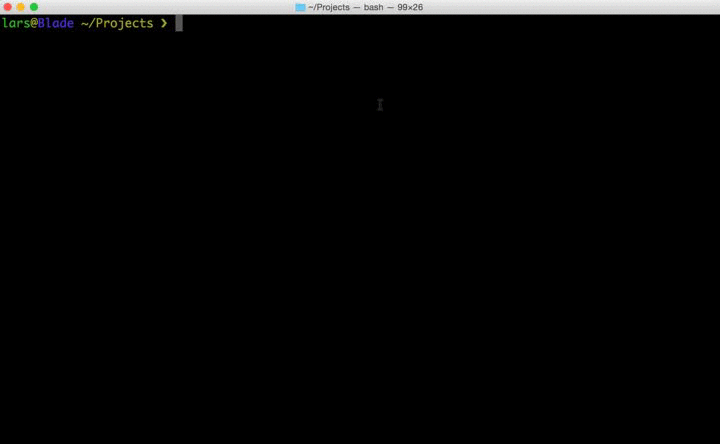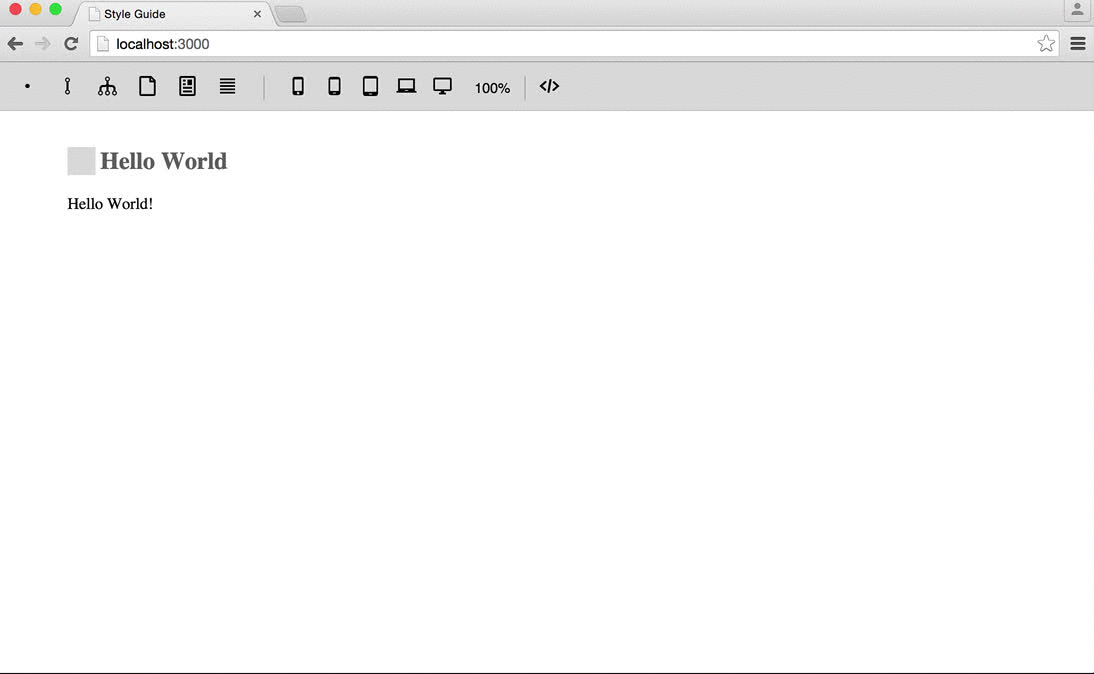Simple styleguide framework. Install component-styleguide into your styleguide project, and it will stay out of your way. It's inspired by http://patternlab.io, but is fundamentally different. And, I would say, much more flexible.
Simple. You start out with a blank project. Your codebase contains just your own HTML templates and CSS stylesheets (and JavaScript if you want to). Put your files in some (configurable) directories, and there you have it.
See component-styleguide-example for an example setup (you could use this project as a boilerplate), and a live running example.
You can use it as a development server, and/or host it somewhere as a Node service.
npm install component-styleguide --save
Create a directory structure, like this:
.
├── components
│ ├── atoms
│ ├── molecules
│ └── organisms
└── data
Write a minimal Node script (say index.js):
var styleguide = require('component-styleguide');
styleguide();
And run it: node index.js.
The styleguide is now running at http://localhost:3000.
Put templates and partials in the components directory and subdirectories (e.g. atoms, molecules, and organisms, but this is not mandatory). They should be files ending with .html and contain HTML snippets or Handlebars templates.
Here is a screencast of a quick & dirty installation:
And here's the result in the browser:
You can work with the default settings straight away, but you might want to customize some things. By default:
- Use
atoms,molecules, andorganisms,templatesandpages, and they will show up in that order and as an icon. But you can name the directories any way you like. - The extension
htmlis expected, but you can configure any other extension. - If you need stub data to feed to your templates, you can put
*.jsonfiles in the/datadirectory. - To use your stylesheets, put filenames in the
stylesheetsarray, and make sure these files are/end up in the/compileddirectory (also configurable). - Same for
scripts.
To specify alternative settings (showing default values here):
styleguide({
components: './components',
ext: 'html',
data: './data',
staticLocalDir: './compiled',
staticPath: '/compiled',
stylesheets: ['stylesheet.css'],
scripts: ['bundle.js'],
});
Alternatively, the styleguide can be started directly from the CLI without any scripting involved:
styleguide
Here's an example with default settings:
styleguide --components components --ext html --data data
You would need to either install it globally (i.e. npm install -g component-styleguide), or use it from a package.json script.
Handlebars is used as the template engine.
Each template is automatically registered as a partial (e.g. you can reuse your {{> atoms/component}} in templates).
All "data" files are concatenated into one "context" for the templates. E.g. users.json containing [] and profile.json containing {} will result in context data for the templates:
{
"users": [],
"profile": {}
}
Now, the {{#users}} collection can be iterated over in any template.
If a there is a JSON file with the same name as the HTML file next to it, its data will be loaded in context data in priority over other data.
In this example, header.html will get data from header.json:
molecules
header.html
header.json
You can organize and compile your CSS and JavaScript in any way you want, as long as they end up in e.g. /compiled (the staticLocalDir) to serve them with the components. I think it's a good idea to work directly in this folder, or compile SASS/LESS/... source files into e.g. compiled/stylesheet.css and configure it as stylesheets: ['stylesheet.css'].
Since I didn't like the approach of most styleguide tools, I created something I actually enjoy to use. It stays out of my way, so I can focus on the components.
Some solutions generate a styleguide from comments in the CSS. But I like to have separate templates, maybe some stub data, maybe some JavaScript. Other tools provide a boilerplate project, which may work fine at first, but it is hard to change or update the underlying styleguide framework later on.
As a Node.js dependency, features and bugs can be dealt with separately. You only need to update the component-styleguide dependency (npm update), without having to fork a repository and/or merge upstream changes, and it will happily continue to just serve your templates and static assets. Simple.


